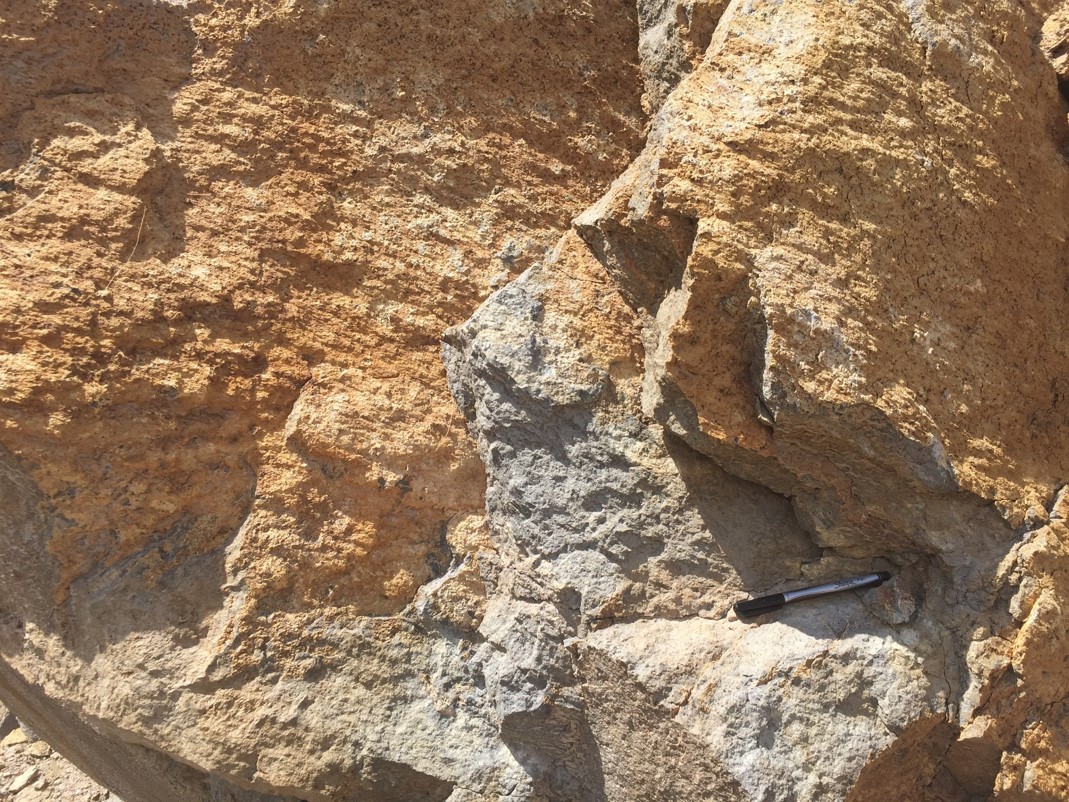
This page is meant to provide a snapshot of my current research directions. It is not an exhaustive list of all of my ongoing projects and interests! As mentioned before, there are two main research directions in the DRG - tectonic inheritance and strain analysis, specifically penetrative strain. I'm also interested in distributed deformation around fault strands, and continue to work in the Midcontinent.

Tectonics of Vietnam!
I am working with Nick Richard (PhD candidate) and Dr. Lynne Elkins of the UNITE lab at UNL on understanding the complex block breakdown of continued extrusion in Vietnam. Indochina, in the core of Sundaland, is thought to be tectonically inactive. Our work is starting to demonstrate an embryonic "continuum rubble" process in the region, the early stages of the block deformation process noted by Dewey et al., in Coso, CA. We have conducted 3 field seasons in Vietnam with colleagues from VAST, in 2016. 2018 and 2020. We note that faulting is ongoing in the Indochina block, and that the Indochina block is breaking down into several smaller, semi-independent blocks, as extrusion from the India-Asia collision continues.

Tectonic Inheritance/Fracture Characterization
I am building on work from former students Jerlyn and Tatiana, who created lineament maps of the SE Nebraska/NE Kansas region, and started to map fractures in the field, and Fahad and Matt, who worked in the Ozarks. Jerlyn and Tatiana helped assess the relationships between present-day fracture networks and the locations and orientations of known faults in the Midcontinent Rift/Nemaha Uplift region, and we find strong indications of tectonic activity post-early Cretaceous. Fahad and Matt characterized a portion of the Ozark Plateau in NW Arkansas, both through the lithostratigraphic column and using topology on bedding planes. Fahad and Matt found that fracture connectivity is highly dependent on carbonate type and diagenetic history, Matt has published his work. Fahad's work on topology shows significant changes in connectivity with Dunham carbonate classification. The next stage of this project is to investigate whether the topological relationships noted by Fahad hold up at the thin section scale.

Penetrative Strain - Magnitude and Distribution
This is an ongoing project, aiming to provide a theoretical framework for evaluating the penetrative strain component of deformation at any point in an orogen. Penetrative strain is the strain accommodated on a sub-cross-section (that is, grain or outcrop) scale - not taken up by major thrusts or folds. So far, we have created models in brittle and ductile-based systems (both papers published in Lithosphere) with work in progress on systems with multiple detachments. The models provided a theoretical framework for penetrative strain distribution and magnitude in a fold-thrust belt. Ongoing work also aims to link outcrop-scale penetrative strain with the analog models, and to assess the penetrative strain component in a basement-involved uplift. Field areas for this effort are the Rattlesnake Anticline and Bighorn Mountains, WY, and the Front Range, CO.
Carbon Dioxide Sequestration
This is an ongoing project, investigating the potential for Carbon Dioxide storage in Nebraska. Part of this project has been funded by the Nebraska Environmental Trust and is in conjunction with Dr. Seunghee Kim of the Energy-Geosystems Research Group. The DRG (former graduate student Sam Fleagle) has investigated the geologic potential for storage in the Pennsylvanian carbonate cyclothems of NE and found that there is promise. I am actively looking for students with Petroleum Engineering backgrounds to carry on some aspects of this work.